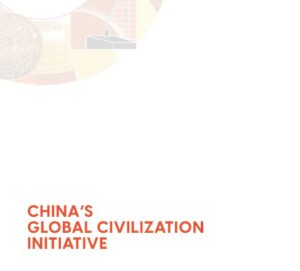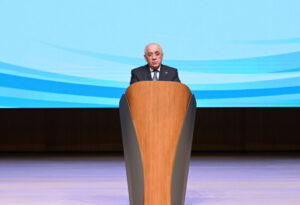South Caucasus Peace Talks in the Spotlight as Domestic Tensions Rise in Armenia

As efforts to finalize a peace treaty between Azerbaijan and Armenia gain momentum, the South Caucasus has once more become the epicenter of international diplomacy. Global players are interacting from Washington to Brussels and from Moscow and Yerevan, but despite growing calls for peace, basic differences remain particularly over the function of obsoleted international formats and the growing turbulence inside Armenia itself.
An Increase in Diplomatic Activity — But Fundamental Gaps Remain
Following the declaration by Baku and Yerevan that the central text of a peace agreement had been decided upon, a second wave of diplomacy has been under development in recent weeks. Joined by comments from President Donald Trump and Russia’s Foreign Ministry, U.S. and EU officials have been increasingly vocal about peace and cooperation in the region. One important problem, nevertheless, still mostly goes missing from the conversation: the ultimate dissolution of the OSCE Minsk Group, an entity Azerbaijan finds outdated and disruptive.
Despite Azerbaijan’s repeated calls to disband the Minsk Group and remove it from all peace negotiations, no major stakeholder has officially endorsed the move. Meanwhile, vague references to “regional development” continue to dominate public statements. The European Union, for example, highlights the Middle Corridor as a vehicle for integration, but tangible progress remains slow. Likewise, Russia is trying to bring back its dormant “3+3 Format” for regional cooperation; it has not produced any breakthrough thus.
Another unresolved problem is the unblocking of regional transportation lines, especially the Zangezur corridor. Azerbaijan insists that any peace accord has to ensure unhindered passage of its people and goods over southern Armenia. Without this, Baku is not likely to promise more general regional connectivity.
U.S. Engagement Signals Strategic Recalibration
Underlining Washington’s fresh interest in the South Caucasus, a trip to the area by U.S. Senator Steve Daines, a prominent member of the Senate Foreign Relations Committee, In that sequence, Daines visited Baku, Tbilisi, and Yerevan — in that order — a reflection of a changing U.S. posture, so bringing the area more precisely under Central Asia.
Senator Daines commended Azerbaijan’s strategic importance, infrastructure quality, and past participation to past international security operations in Baku He reiterated the American perspective of the South Caucasus as part of “Greater Central Asia,” a vision pushed by policy circles in the United States as a strategic substitute for a Europe-centric one.
He visited opposition leaders and Prime Minister Irakli Kobakhidze in Georgia to reafford his support for sensible U.S.-Georgia ties. His message in Armenia was clear: actual reforms are what determine peace and prosperity. Armenia has to stop revanchist policies and renounce territorial claims against Azerbaijan if it is to take part in regional integration.
Pashinyan Faces Mounting Domestic Pressure
Armenian Prime Minister Nikol Pashinyan is battling mounting discontent at home while international diplomacy advances. Lead by Catholicos Karekin II, his government openly clashes with the Armenian Apostolic Church. The Church has angrily denounced the government’s compromises in peace negotiations and charged Pashinyan with trying to stifle its social role.
One front in Pashinyan’s more general political battle is this church-state conflict. Recent local elections have seen failures for his government, which is under increasing pressure on opposition leaders via anti-corruption investigations and court actions. Also part of this larger approach is the recent resignation of Armenia’s police chief, seen as a step to consolidate control over internal security.
Viewers point out that these developments might open doors for Armenia’s 2026 parliamentary elections. The rhetoric directed against the Church and opposition leaders seems meant to polarize society and confirm Pashinyan’s political base. Simultaneously, the Church is establishing itself as a political force in its own right, prepared to align with like-minded groups.
Peace Still Fragile Without Clarity and Commitment
Peace in the South Caucasus is still fragile even with more worldwide attention and rhetoric. Serious difficulties arise from the lack of agreement on problems including the OSCE Minsk Group, the unblocking of transportation routes, and the domestic stability of Armenia.
The visit of Senator Daines points to a more strategically, regionally integrated US approach. Still, peace cannot be attained with just diplomatic means. Armenia has to show real political will both domestically and abroad if peace is to grab hold.
With Prime Minister Pashinyan’s authority under strain and opposition forces gaining momentum, the outcome of Armenia’s internal political conflict could ultimately shape not just its national future, but the broader trajectory of South Caucasus stability.


